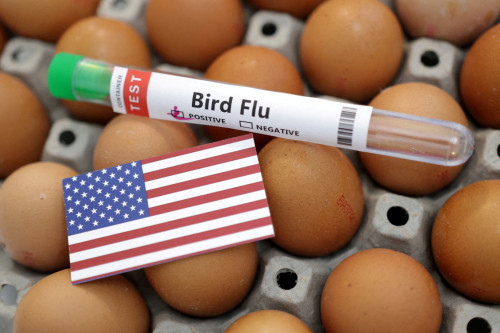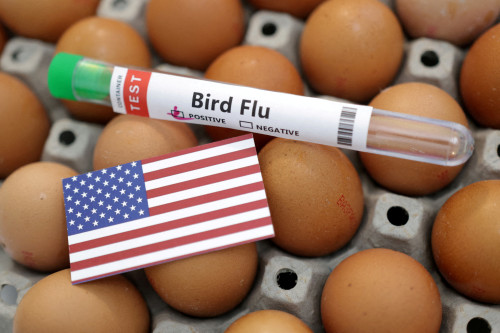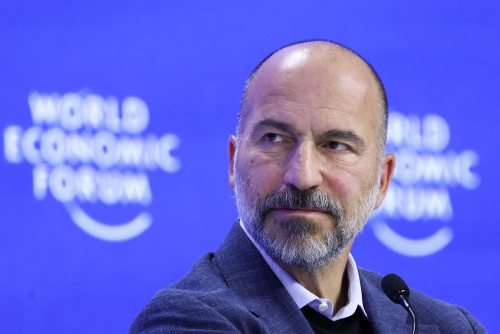By Tom Polansek and Leah Douglas
(Reuters) – The price of eggs at U.S. grocery stores has climbed to a record high, nearly doubling from a year ago, as outbreaks of bird flu have led to shortages by wiping out millions of hens.
Eggs are missing from grocery shelves nationwide, and shoppers able to snag a dozen are facing sticker shock for the breakfast staple.
“A simple egg sandwich is like a luxury,” said Jon Harris, who was shopping for eggs at a supermarket in Chicago on Thursday.
Since November, a surge of infections of the lethal flu in Iowa and Ohio, the two biggest egg-producing states, has fueled the shortage. As a result, egg producers are charging more to wholesalers, retailers are limiting how much shoppers can buy and restaurant menu prices are up. The U.S. is importing tons of eggs from Turkey to bolster supplies.
WHY ARE CHICKENS KILLED?
The U.S. Department of Agriculture culls any flocks with poultry that test positive to contain outbreaks. The policy has devastated massive commercial farms, including one that culled 4.2 million laying hens in Sioux County, Iowa, in December.
Losses of flocks created a supply shock that has left fewer eggs available for shoppers, restaurants and food companies that make products containing eggs. It takes months for farms to return to full production after an outbreak because they need to dispose of dead chickens, clean infected barns and bring in new birds to lay eggs.
HOW MANY BIRDS HAVE DIED?
About 163 million chickens, turkeys and other birds have died from the virus or been culled to contain its spread since the U.S. outbreak in poultry began in 2022, according to the USDA.
And the pace of spread among egg-laying chickens has been picking up, USDA data show. In January, 19.5 million egg-laying chickens were killed, the most of any month in the outbreak since March 2022.
With a population of about 340 million people, the U.S. has traditionally maintained about one laying hen per person to meet consumer demand, experts said.
As of Jan. 1, the country had 304 million laying hens producing table eggs, down 2% from a year earlier and 11% from five years ago, according to USDA data.
HOW HIGH ARE PRICES?
Average retail prices in January reached a record $4.95 per dozen, the Bureau of Labor Statistics said. That was up 96% from a year earlier and 239% from five years ago.
Consumers have faced ever bigger sticker shock, with prices climbing to $8 or even $10 per dozen in major cities like Chicago.
Wholesale prices have also set records, benefiting farmers who manage to avoid outbreaks and are not locked in to long-term pricing arrangements.
The increase imperils U.S. President Donald Trump’s pledge to lower grocery bills as rising prices have contributed to inflation. Egg prices accounted for roughly two-thirds of the total increase in food costs last month, according to the U.S. Bureau of Labor Statistics.
WHAT GOES INTO THE COST OF AN EGG?
About 60% to 70% of the cost of producing an egg comes from the grain fed to hens, said Errol Schweizer, who was vice president of Whole Foods’ grocery division between 2009 and 2016.
Eggs from hens raised on open pastures carry additional costs, he said, as the birds have more space than those confined to cages in barns.
Additional costs come from logistics and transportation. Then, retail markups are usually 20% to 30% higher than the wholesale price, though bird flu may change that dynamic, Schweizer said.
“Some retailers are not taking full markups and may be selling eggs at cost, while others may be taking higher markups to take advantage of the crisis,” he said.
HOW WILL OUTBREAKS END?
Egg farmers are urging the USDA to approve the use of a vaccine to protect laying hens from the virus. The agency has resisted vaccines in the past over concerns that their use will disrupt U.S. exports of poultry products, including chicken meat, to importers who want to avoid buying from suppliers with outbreaks.
“It sure seems to me that we’re going to have to start using vaccines if we want to start putting this fire out,” said Gregory Gray, a University of Texas Medical Branch professor.
The USDA has said it is rebuilding a stockpile of vaccines and granted a conditional license to animal-health company Zoetis for one suited for laying hens. It could take a year for vaccines to be administered and become highly effective, if they are approved, said Heather Jones, founder of Heather Jones Research, which focuses on agriculture and meat companies.
In France, producers have said that a bird flu vaccination campaign launched in 2023 has helped restore production to levels not seen since the virus began to wipe out tens of millions of birds.
(Reporting by Tom Polansek in Chicago and Leah Douglas in Washington; additional reporting by Renee Hickman in Chicago. Editing by Emily Schmall and Alistair Bell)







